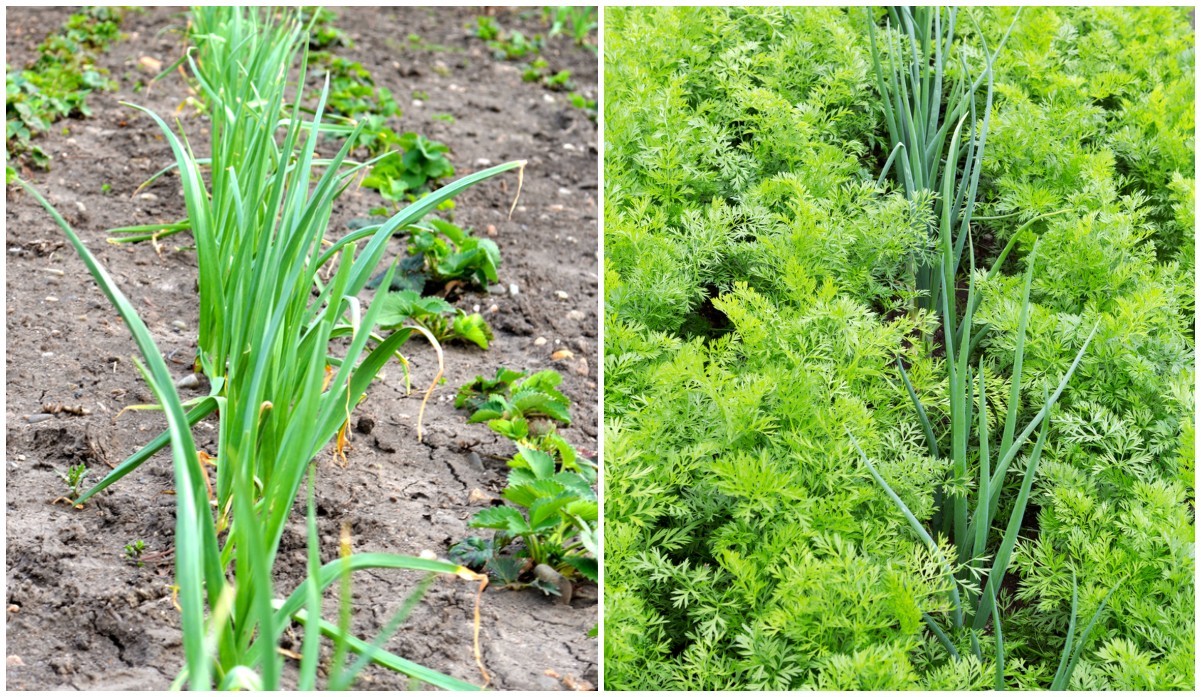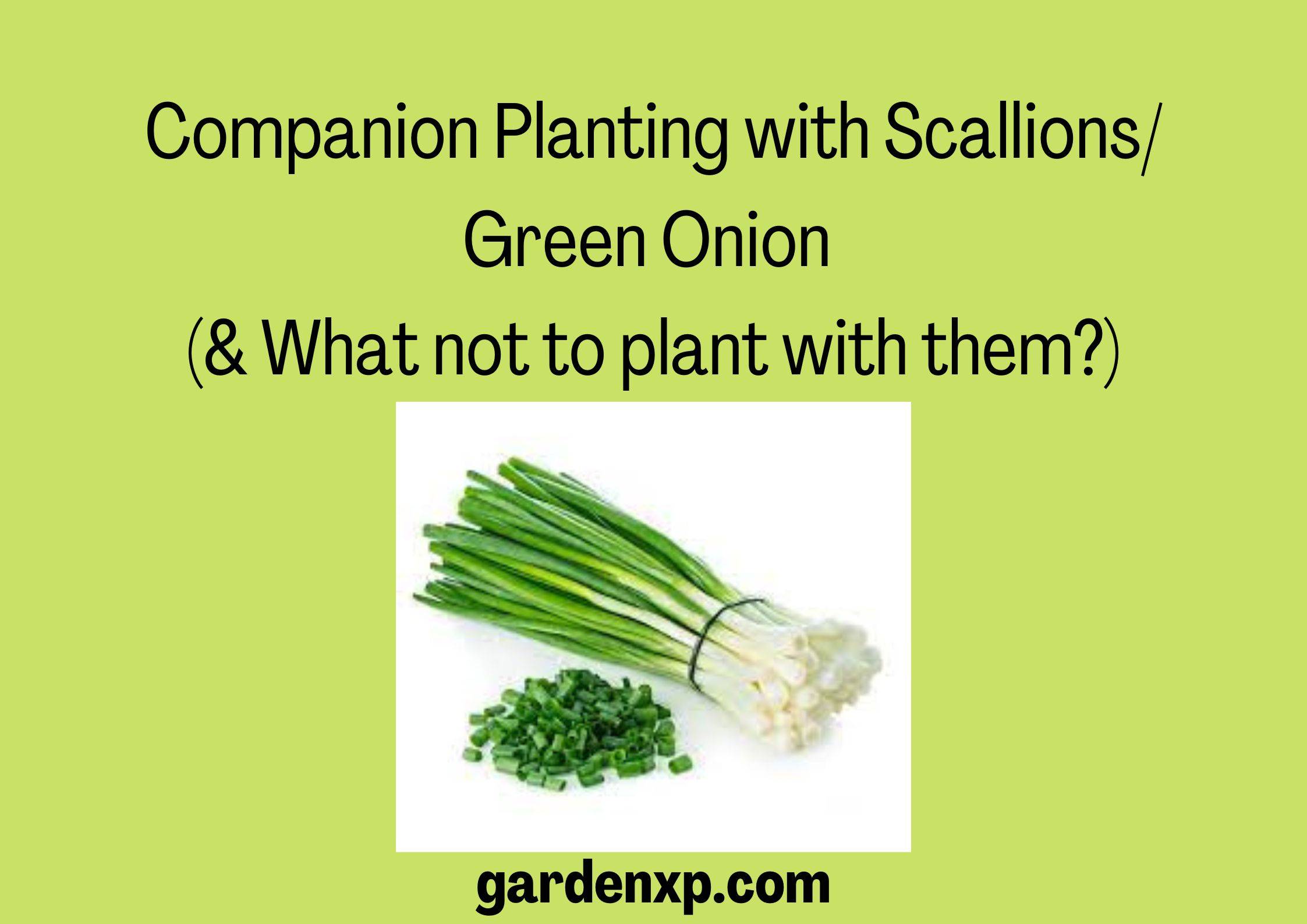The Ultimate Guide To Companion Planting With Scallions
The Ultimate Guide to Companion Planting with Scallions
Scallions are a versatile vegetable that can be used in a variety of dishes. They are also relatively easy to grow, and companion planting can help to improve their growth and yield.
In this guide, we will discuss the benefits of companion planting with scallions, as well as some of the best companion plants to grow with them. We will also cover some of the plants that should be avoided when companion planting with scallions.
Benefits of Companion Planting with Scallions
There are many benefits to companion planting with scallions. Some of the most notable benefits include:
- Increased growth and yield: Companion planting can help to increase the growth and yield of scallions. This is because some companion plants can attract beneficial insects, repel pests, and improve the overall health of the soil.
- Improved flavor: Companion planting can also improve the flavor of scallions. This is because some companion plants can release chemicals that suppress the growth of harmful bacteria and fungi.
- Disease resistance: Companion planting can help to improve the disease resistance of scallions. This is because some companion plants can produce chemicals that protect scallions from pests and diseases.
- Reduced pest and disease problems: Companion planting can help to reduce pest and disease problems. This is because some companion plants can attract beneficial insects that prey on pests, or repel pests with their strong scents.
- Improved soil quality: Companion planting can help to improve soil quality. This is because some companion plants can add nutrients to the soil, or improve the drainage and aeration of the soil.
Best Companion Plants for Scallions
Some of the best companion plants for scallions include:
- Carrots: Carrots and scallions are a classic companion planting combination. They benefit each other in a number of ways. Carrots help to improve the flavor of scallions, while scallions help to repel carrot flies.
- Cabbage: Cabbage and scallions are also a good companion planting combination. Scallions help to repel cabbage moths, while cabbage helps to suppress the growth of harmful bacteria and fungi.
- Lettuce: Lettuce and scallions are another good companion planting combination. They both have shallow root systems, so they can be planted close together without competing for resources. Scallions also help to repel aphids and other pests that can damage lettuce.
- Peas: Peas and scallions are a good companion planting combination because they have different nutrient requirements. Peas fix nitrogen in the soil, which benefits scallions. Scallions help to repel pea moth larvae.
- Tomatoes: Tomatoes and scallions are a good companion planting combination because they both benefit from the same conditions. They both prefer full sun and well-drained soil. Scallions help to repel tomato hornworms, while tomatoes help to repel aphids and other pests that can damage scallions.
Plants to Avoid Planting with Scallions
There are a few plants that should be avoided when companion planting with scallions. These include:
- Asparagus: Asparagus is a heavy feeder, and it can compete with scallions for nutrients.
- Beans: Beans can attract bean beetles, which can damage scallions.
- Peas: Peas can attract pea moth larvae, which can damage scallions.
- Sage: Sage can stunt the growth of scallions.
Conclusion
Companion planting with scallions can be a great way to improve their growth and yield, as well as their flavor and disease resistance. By planting scallions with the right companion plants, you can create a healthy and productive garden.
Scallions are a versatile vegetable that can be enjoyed in many dishes. They are also relatively easy to grow, and companion planting can help to improve their yield and flavor.
Some of the best companion plants for scallions include:
- Beets. Beets have deep roots that help to aerate the soil, which benefits the shallow-rooted scallions.
- Carrots. Carrots and scallions are both members of the allium family, and they benefit from each other's pest-repelling properties.
- Cabbage. Cabbage and scallions can help to deter pests from each other's plants.
- Peas. Peas and scallions can be planted together in the same row, as long as they are spaced at least 6 inches apart.
- Herbs. Many herbs, such as dill, parsley, and thyme, can be planted near scallions to improve their flavor.
For more information about companion planting with scallions, please visit Gardenia Inspiration. This website has a wealth of information on the topic, including a list of recommended companion plants, tips on how to plant them together, and information on the benefits of companion planting.
FAQ of scallion companion plants
Scallion Companion Plants FAQ
What are good companion plants for scallions?
Scallions are a versatile vegetable that can be grown alongside many different plants. Some of their best companion plants include:
- Beets: Beets have deep roots that help to aerate the soil, which benefits the shallow roots of scallions.
- Swiss chard: Swiss chard also has deep roots, and its large leaves help to shade the soil and prevent weeds from growing.
- Carrots: Carrots and scallions have similar growing requirements and will not compete for nutrients.
- Radishes: Radishes mature quickly, so you can plant them between scallions and harvest them before they shade the scallions.
- Lettuce: Lettuce is a low-maintenance crop that does not require a lot of space, making it a good companion plant for scallions.
What are bad companion plants for scallions?
Scallions should not be planted near:
- Mint: Mint is a very aggressive plant that can quickly take over a garden bed. It produces chemicals that can inhibit the growth of other plants.
- Peas: Peas have shallow roots that can compete with the shallow roots of scallions for nutrients.
- Cucumbers: Cucumbers require a lot of water, which can lead to the scallions becoming waterlogged.
- Tomatoes: Tomatoes can attract pests that also target scallions, such as aphids and hornworms.
- Potatoes: Potatoes and scallions are both susceptible to the same diseases, such as scab and blight.
How do I start scallion seeds?
Scallion seeds can be started indoors four weeks before the last frost date. Sow the seeds ¼ to ½ inch deep in well-draining soil. Keep the soil moist but not soggy. Once the seedlings have two sets of true leaves, they can be transplanted outdoors. Space the plants 6-8 inches apart.
How can I make my scallions grow faster?
There are a few things you can do to make your scallions grow faster:
- Plant them in full sun.
- Water them regularly, especially during hot weather.
- Fertilize them every few weeks with a balanced fertilizer.
- Thin the seedlings so that they have plenty of room to grow.
- Harvest the scallions when they are young and tender.
Image of scallion companion plants
- Carrots: Carrots and scallions are both root vegetables, so they benefit from each other's shade. Carrots help to suppress weeds, while scallions help to deter pests.

- Cabbage family members: Cabbage, broccoli, cauliflower, and kale are all members of the Brassica family. These plants can all benefit from being planted near scallions, as scallions help to repel pests and diseases.

- Lettuce: Lettuce and scallions are both cool-season crops that prefer full sun. They can be planted together in the same garden bed, as they will not compete for resources.

- Parsnips: Parsnips and scallions are both long-season crops that can be planted in the fall or early spring. They can be planted together in the same garden bed, as they will not compete for resources.

- Spinach: Spinach and scallions are both cool-season crops that prefer full sun. They can be planted together in the same garden bed, as they will not compete for resources.

Post a Comment for "The Ultimate Guide To Companion Planting With Scallions"